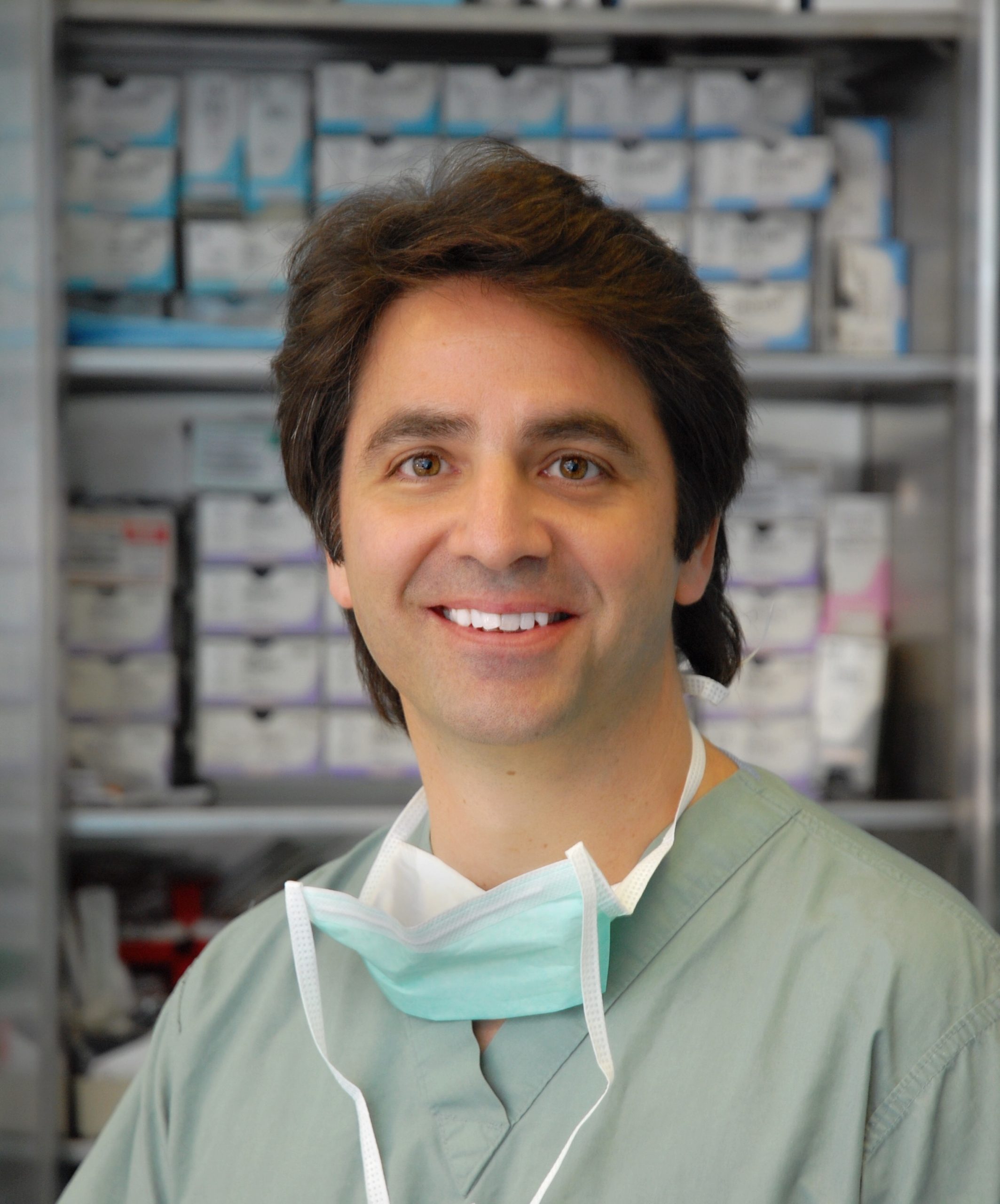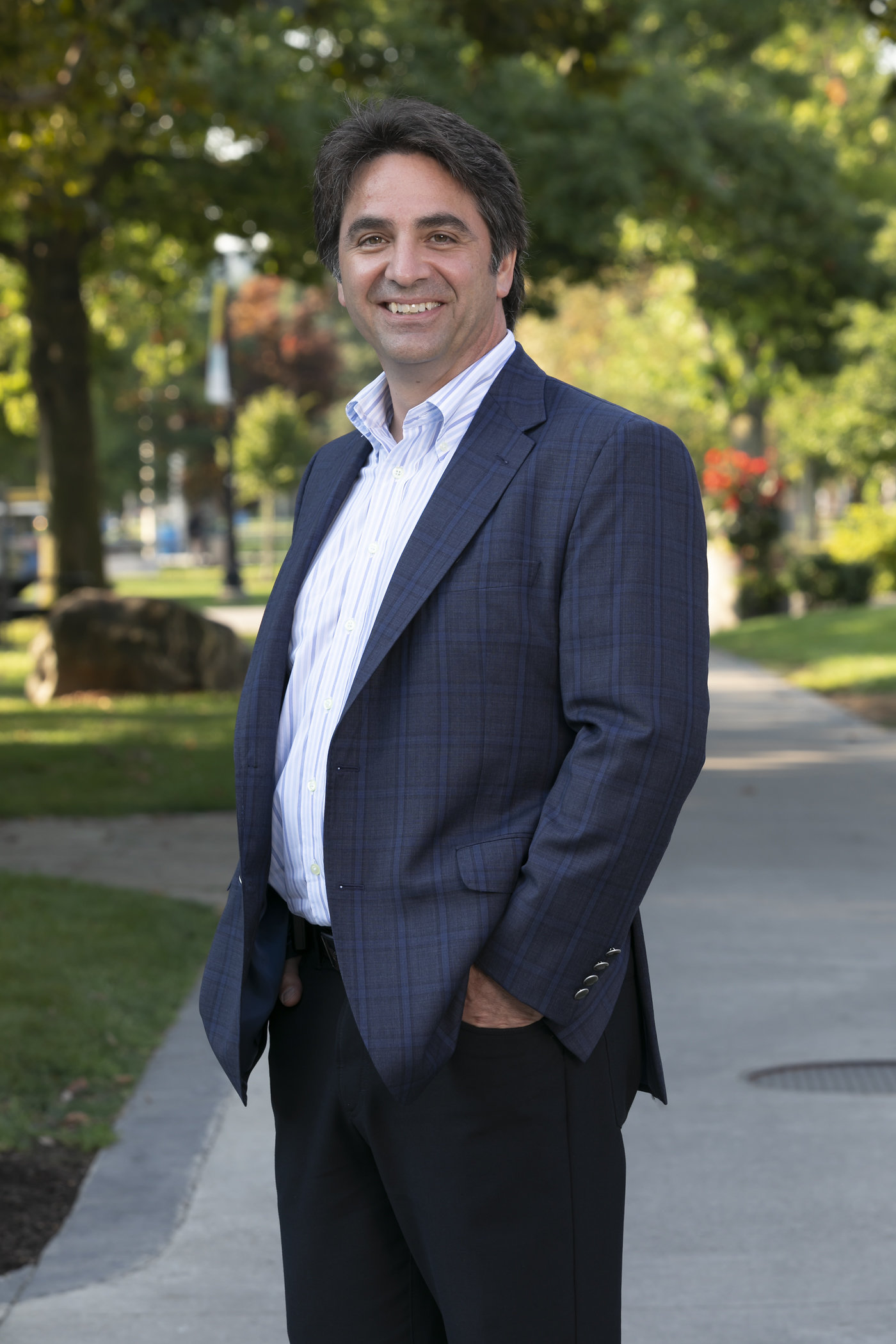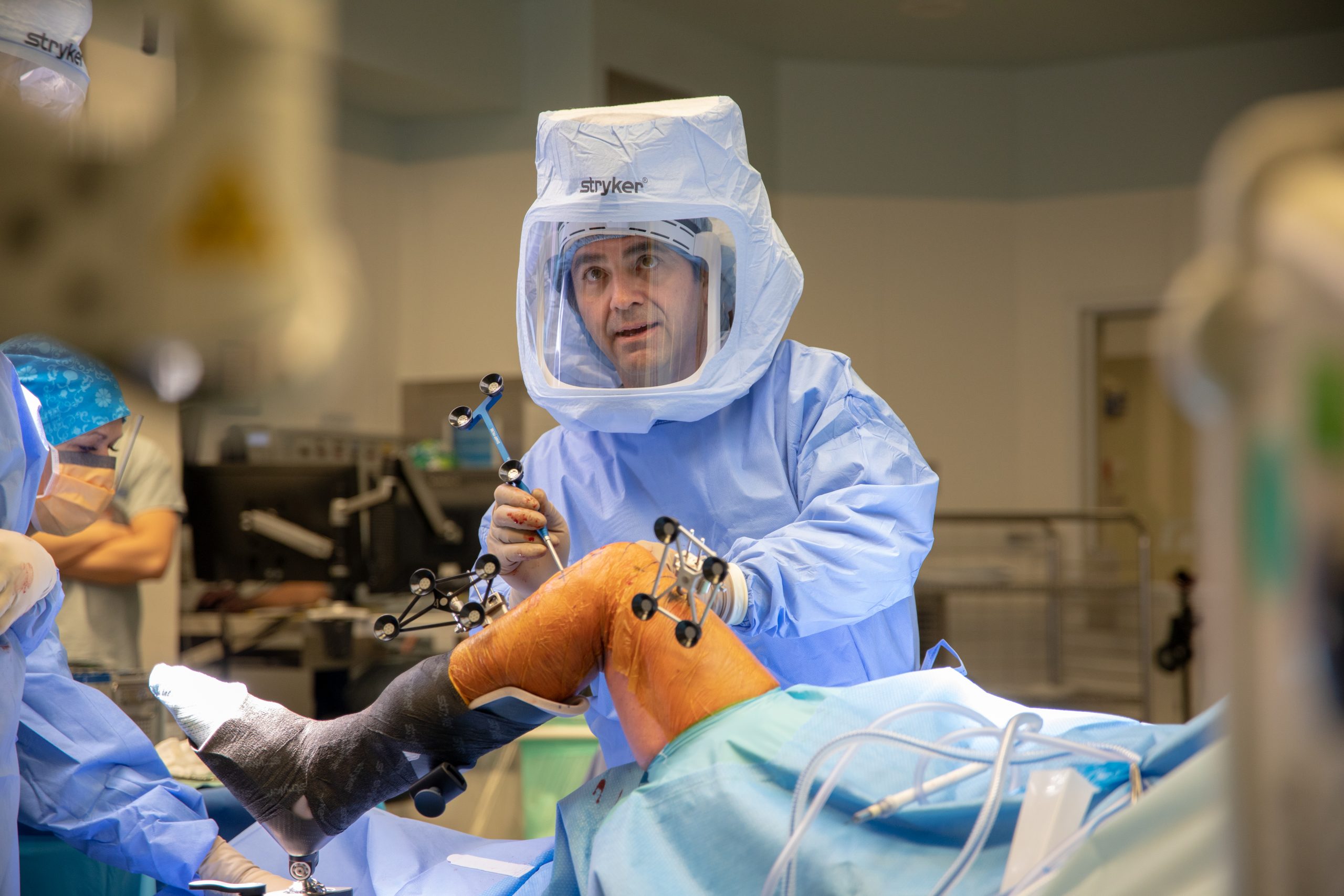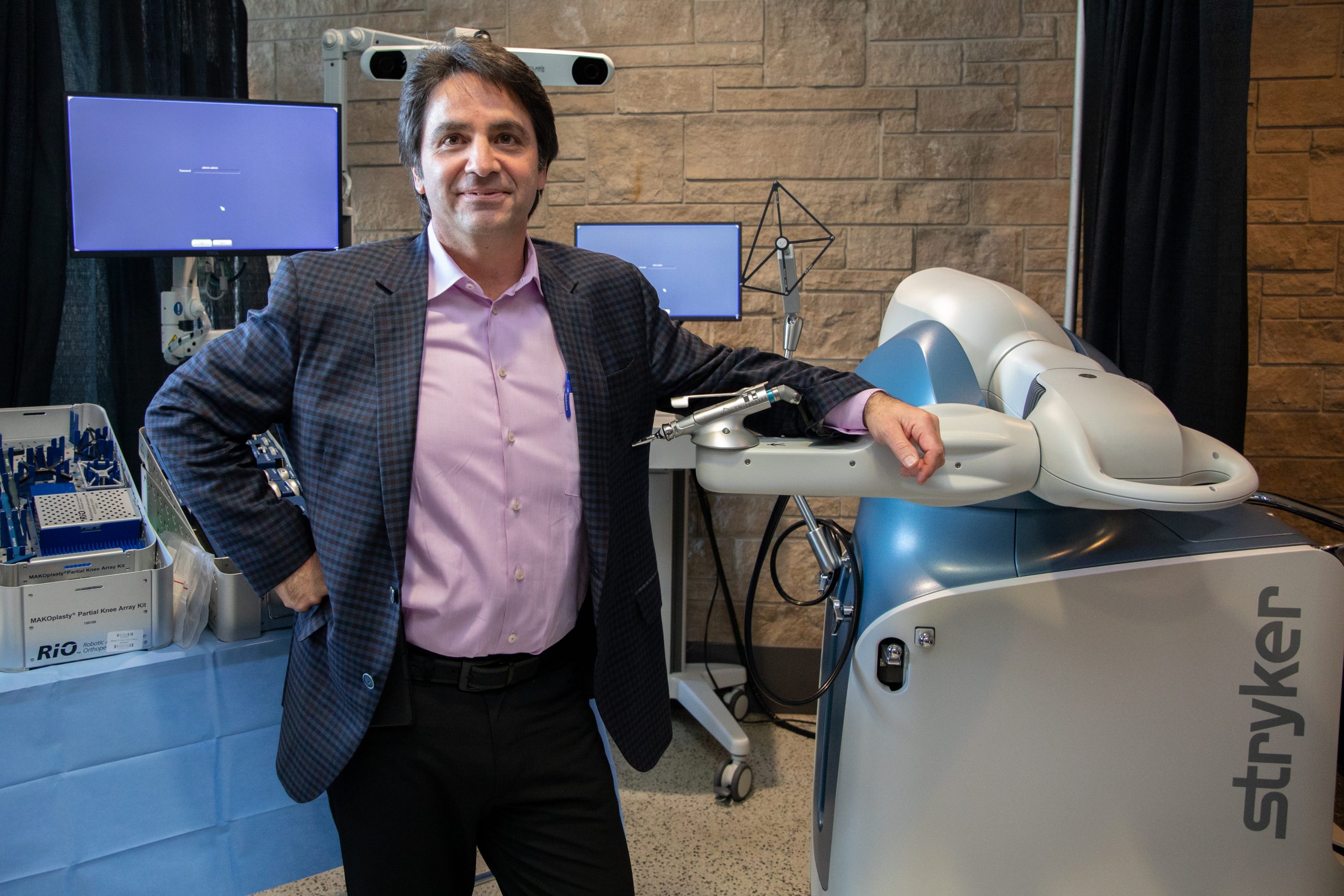A team of doctors in Hamilton, Ontario, are the first in Canada to try out new treatments on knee injury patients across North America. In Canada, more than 67,000 patients undergo surgery for new knees each year. Dr. Anthony Adili, an orthopedic surgeon at St. Joseph’s Healthcare Hamilton, and his team are using novel approaches to help their patients. On January 18, 2019, for the first time in Canada, the doctors at St. Joseph’s Healthcare Hamilton used a robot to perform a partial knee replacement. Peter Sporta, a 66-year-old man from Oakville, Ontario, was the first person to undergo this surgical procedure. Sporta, who waited an extra two months to get a robotic partial knee replacement, was in the hospital for one night and walking the next day. Though more clinical research is needed to see how the procedure impacts recovery, Dr. Adili says the belief is it helps speed healing and has improved future health outcomes.
“We feel because I don’t have to do as big an exposure, you’re not disrupting as much soft tissue or bone anatomy,”
says Adili. St. Joseph’s Healthcare Hamilton is the only centre in Canada doing robotic orthopedic surgery as part of a study to prove the effectiveness of the technology. Robotic knee and hip replacement surgery first surfaced in the U.S. in the mid-2000s. It is slowly becoming more mainstream, with the procedure now happening in parts of Europe as well. Adili feels the biggest upside to incorporating a robot in surgeries like this one is it not only allows doctors to be more precise with the placement of current implant designs, the robotic assisted surgery opens new possibilities for treating arthritic knees that were not capable with conventional techniques. Currently, the patient’s bone is cut to match the geometry of the implants that are commercially available by the various manufacturers. By marrying this technology with the growing technology in biomaterials, 3D printing, and 3D imaging, it is not conceivable that the implants will be made custom to fit the unique anatomy of the individual patient. This is truly customized medicine and has the potential to transform how we treat knee arthritis. Dr. Adili says,
“The big advantage is you’re able to pre-plan the patient’s surgery on a 3D model in the OR.” He says one in five patients are currently unhappy with the outcome of their knee replacement and the robot’s precision could drop that number substantially.




In addition to incorporating a robot during surgery, Dr. Adili’s team was the first in Canada to employ a new technique to rebuild damaged knee joints. Instead of using the traditional metal or plastic implants, doctors grow sheets of cartilage in a lab using a patient’s own DNA and then cut custom-fit implants to repair the knee. Salim Lakhi, a 20-year-old man from Kitchener, Ontario fell rock climbing during a trip to South Africa. Luckily for Lakhi, Dr. Adili and Dr. Khan are collaborating on a randomized controlled trial comparing the outcomes between microfracture (the traditional treatment method) and the latest in cartilage transplant surgery.
Salim Lakhi was the first patient in Canada to undergo this novel procedure August 2018. Specifically, the study is examining autologous chondrocyte transplant, where tissue is taken from the same individual who receives the transplant. The novel treatment involves harvesting a tiny, healthy sample of the patient’s cartilage, which is then used to grow sheets of the patient’s own cartilage in a US laboratory. The lab-grown cartilage is then fitted to the injury and transplanted back into the patient’s knee. If the experimental method proves effective in the knee, it could have widespread use, Dr. Adili said. The hope is to try this out on damaged shoulders and hips, “If it’s proven that this works in the knee, then you can really foresee that you could actually do this in the hip joint, you can do it in the ankle joint, you can do it in the shoulder joint, you can do it in the elbow joint,” Dr. Adili believes. Using cartilage made by the patient’s own DNA to replace “just the bad part of the knee … leav[es] more of the patient’s normal anatomy behind,” says Dr. Adili, which then lends itself to the formation of an entirely new articulating surface that essentially duplicates the original cartilage in its structure, composition, and function. Cartilage repair techniques aim at alleviating pain, restoring functionality, and could avoid the need for total knee surgery. By collaborating with other institutions, clinician researchers at St. Joseph’s are helping to develop the next generation of orthopedic treatments for knee and knee joint preservation. Dr.Adili affirms, “We’re just starting down a very exciting path … At the end of the day, I think patients will benefit immensely from [these] new technolog[ies].”
